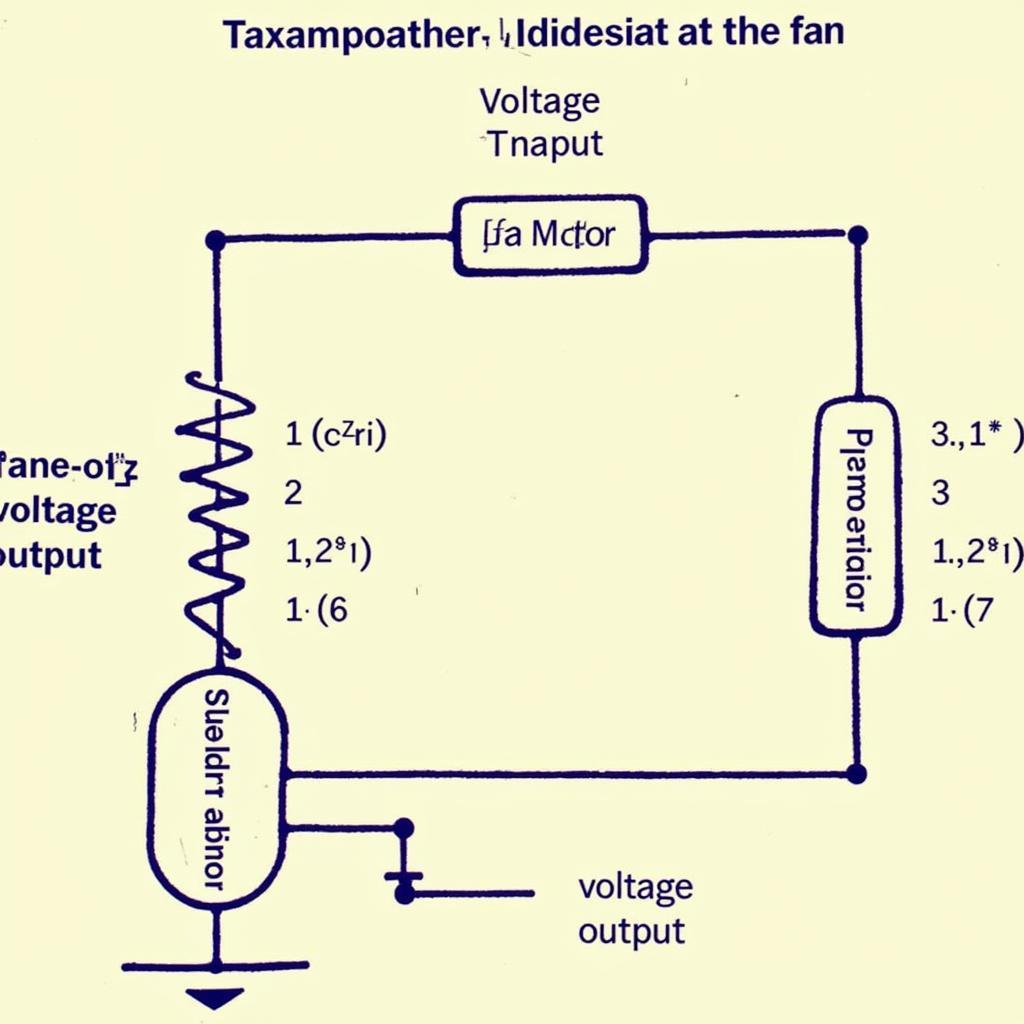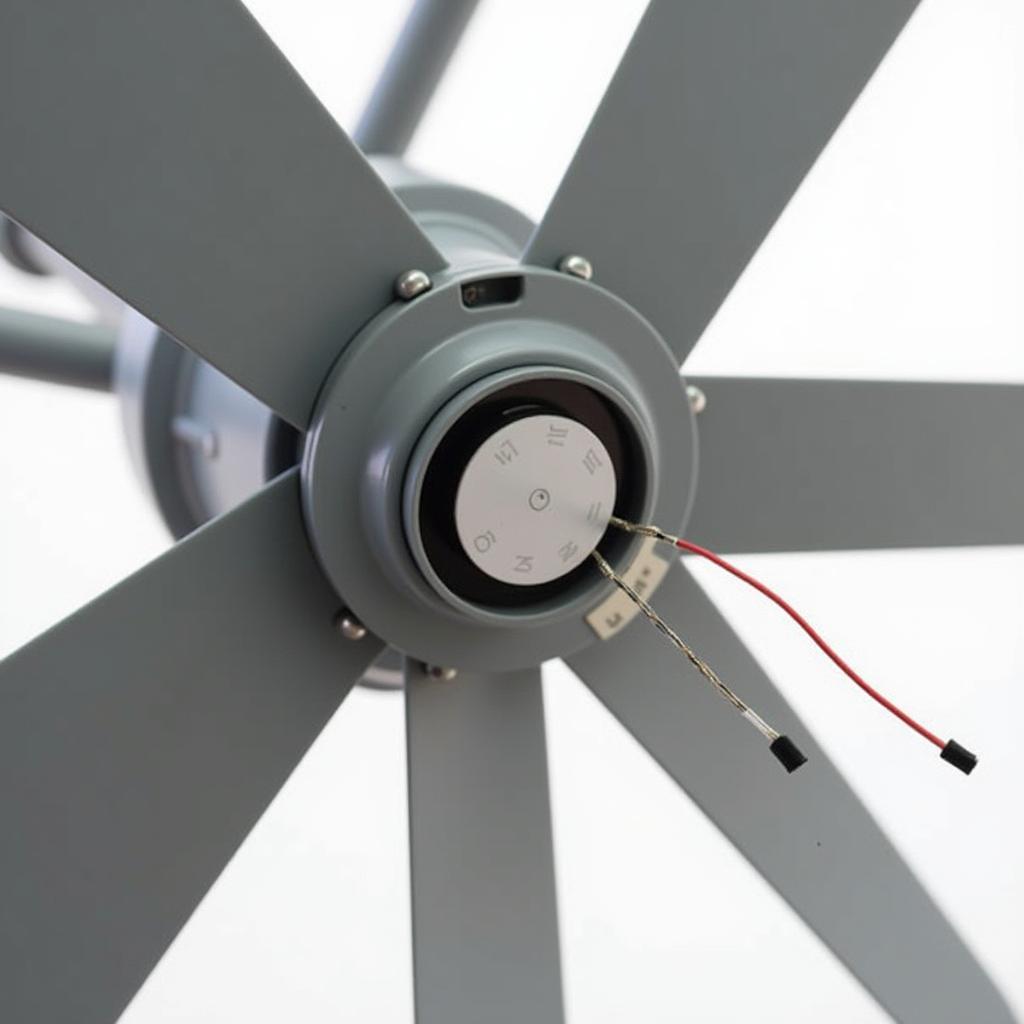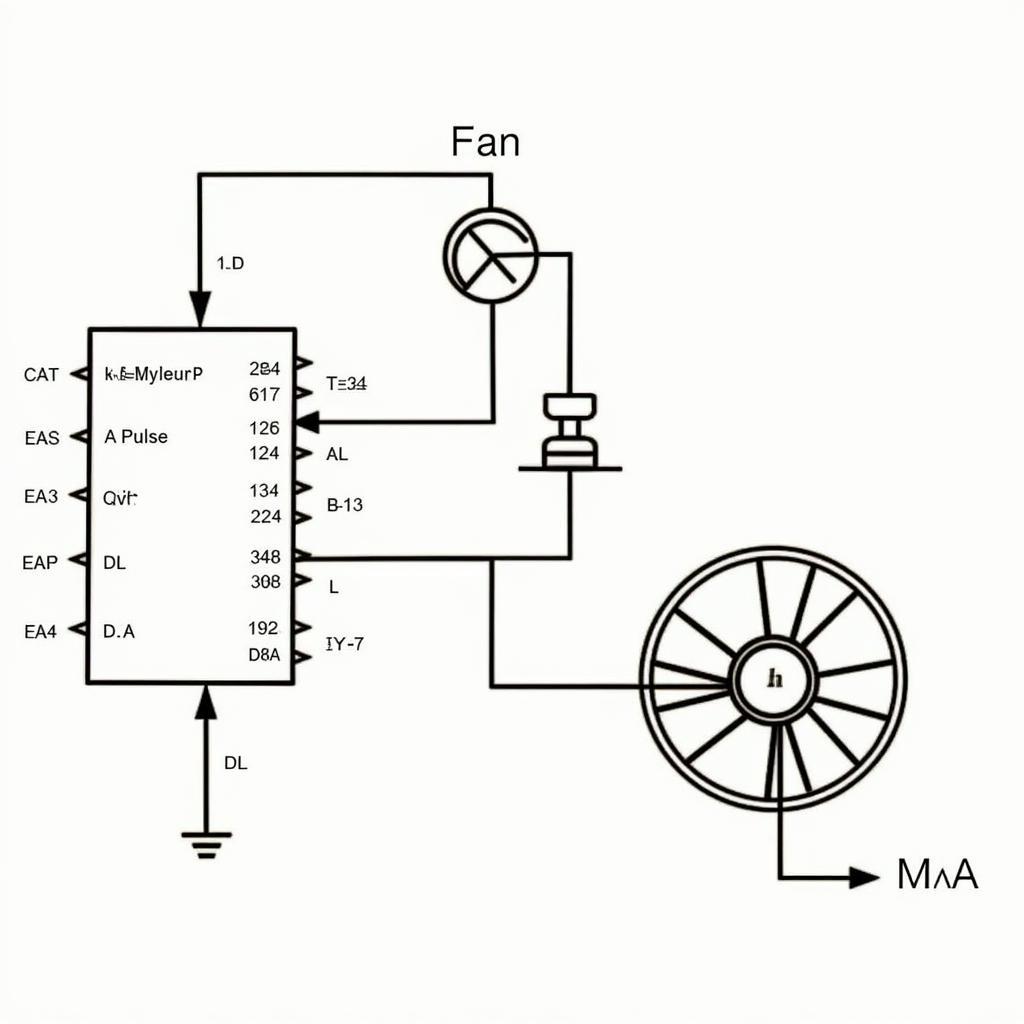An Electric Fan Speed Measurement Circuit is essential for monitoring and controlling fan performance, ensuring optimal efficiency and longevity. Understanding how these circuits work can help you troubleshoot issues, design custom solutions, or simply appreciate the technology behind everyday appliances. This guide explores the different methods and components used in electric fan speed measurement, from simple analog circuits to sophisticated digital systems. We’ll also look at their applications and provide practical tips for implementation. Check out our selection of hall fan 3 wire for more information on fan components.
Understanding the Need for Electric Fan Speed Measurement
Why is measuring fan speed important? It allows us to optimize performance, detect potential problems, and implement automated control systems. For example, in cooling systems, knowing the fan speed helps ensure proper airflow and temperature regulation. In industrial settings, monitoring fan speed is crucial for preventative maintenance and minimizing downtime.
Benefits of Accurate Fan Speed Measurement
- Improved Efficiency: By monitoring fan speed, we can adjust it to meet the exact cooling requirements, minimizing energy waste.
- Predictive Maintenance: Changes in fan speed can indicate wear and tear, allowing for timely maintenance and preventing costly breakdowns.
- Automated Control: Accurate speed measurement enables automated control systems to adjust fan operation based on real-time conditions.
- Enhanced Safety: Monitoring fan speed can help prevent overheating and potential safety hazards.
Methods for Measuring Electric Fan Speed
Several methods can be employed to measure electric fan speed, each with its own advantages and disadvantages.
Analog Methods
Traditional analog methods often involve using a tachometer or a frequency-to-voltage converter. A tachometer generates a voltage proportional to the fan’s rotational speed. A frequency-to-voltage converter measures the frequency of pulses generated by a sensor attached to the fan, and converts it into a voltage signal.
 Electric Fan Tachometer Circuit Diagram
Electric Fan Tachometer Circuit Diagram
Digital Methods
Digital methods offer higher accuracy and more advanced features. These methods typically involve using a microcontroller or a dedicated integrated circuit (IC) to count pulses generated by a hall-effect sensor or an optical sensor. The number of pulses per unit time directly corresponds to the fan speed. These digital methods also allow for easy integration with other digital systems. For those interested in specific components, you might want to check our page on ao smith bathroom exhaust fan motors.
Hall-Effect Sensors
Hall-effect sensors are widely used in digital fan speed measurement due to their robustness and reliability. They detect changes in magnetic fields caused by rotating magnets or ferrous metal blades attached to the fan.
 Hall Effect Sensor for Fan Speed Measurement
Hall Effect Sensor for Fan Speed Measurement
Optical Sensors
Optical sensors use light beams to detect the rotation of the fan. A slotted disc attached to the fan interrupts the light beam, generating pulses that are counted to determine the fan speed.
Choosing the Right Method
The best method for measuring electric fan speed depends on the specific application requirements, such as accuracy, cost, and complexity. For simple applications, analog methods might suffice. For more demanding applications, digital methods offer superior performance. You might find our article on electric fan speed measurement circuit diode helpful in understanding the role of diodes in these circuits.
Example: Implementing a Digital Fan Speed Measurement Circuit with a Microcontroller
A microcontroller can be programmed to count pulses from a hall-effect sensor and calculate the fan speed. This method offers high accuracy and flexibility. The microcontroller can also be used to control the fan speed based on the measured value.
 Microcontroller Based Fan Speed Measurement Circuit
Microcontroller Based Fan Speed Measurement Circuit
Conclusion
Measuring electric fan speed is critical for various applications, from optimizing performance to ensuring safety. Understanding the different methods available allows for choosing the most suitable approach based on specific needs. Whether using a simple analog circuit or a sophisticated digital system, accurate fan speed measurement provides valuable insights and enables better control. By mastering this fundamental aspect of fan operation, we can improve efficiency, enhance reliability, and ensure optimal performance.
FAQ
-
What is the most accurate method for measuring fan speed?
Digital methods using microcontrollers and hall-effect sensors generally offer the highest accuracy. -
Can I measure fan speed without physically contacting the fan?
Yes, optical sensors and some types of hall-effect sensors allow for non-contact speed measurement. -
What are the common problems encountered in fan speed measurement circuits?
Noise, interference, and sensor drift can affect the accuracy of fan speed measurements. -
How can I calibrate a fan speed measurement circuit?
Calibration can be done by comparing the measured speed with a known reference speed, such as a calibrated tachometer. -
What are the typical applications of fan speed measurement circuits?
Cooling systems, HVAC systems, industrial machinery, and robotics are some common applications. -
How can I choose the right sensor for my application?
Consider factors such as the fan’s operating environment, required accuracy, and cost when selecting a sensor. -
What are the advantages of using a microcontroller for fan speed measurement?
Microcontrollers offer flexibility, programmability, and the ability to integrate with other digital systems.
For further assistance, please contact us at Phone Number: 0903426737, Email: fansbongda@gmail.com or visit our address: Hamlet 9, Zone 6, Gieng Day Ward, Ha Long City, Gieng Day, Ha Long, Quang Ninh, Vietnam. We have a 24/7 customer service team.


